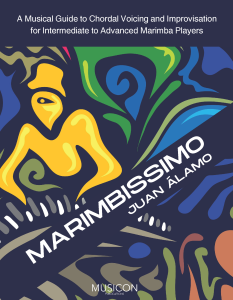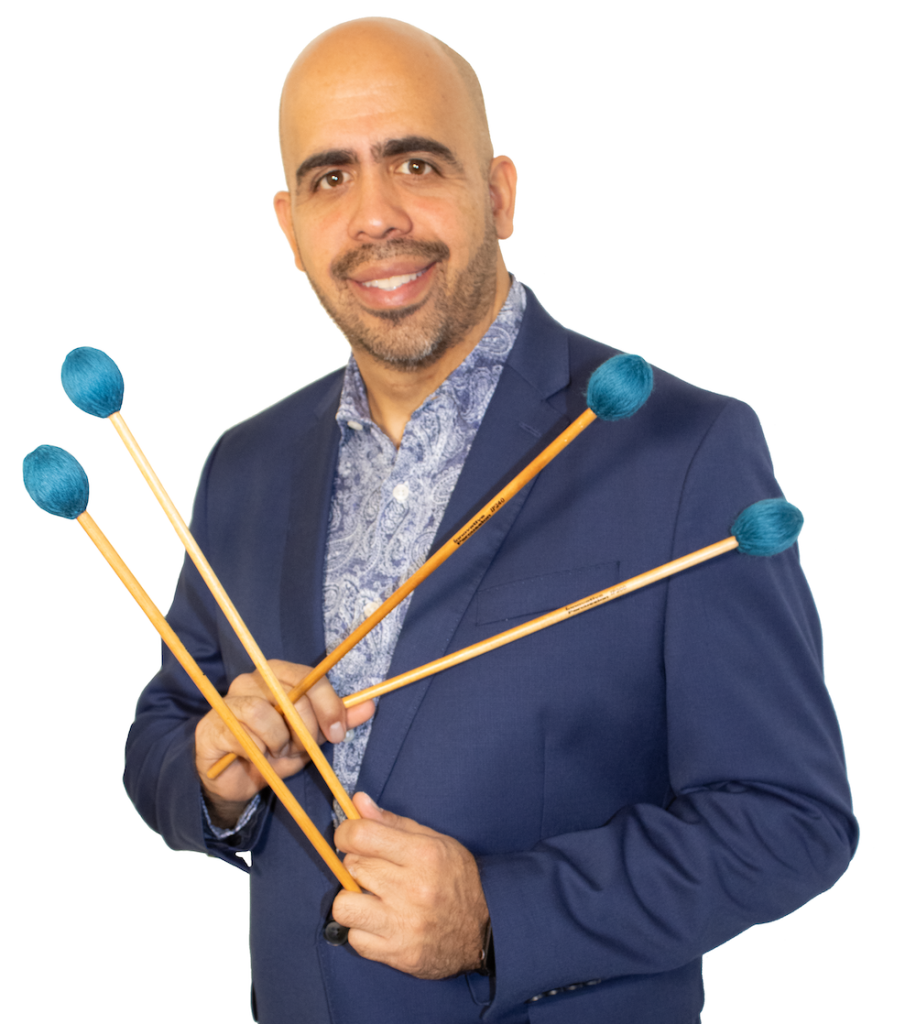“My book aims to encourage marimbists, and all musicians, to become well-rounded musicians by using a creative, open-ended, and integrative approach in their musical studies!”
In this latest installment of Book Notes, we’re excited to introduce you to Associate Professor Dr. Juan Álamo‘s Marimbissimo: A Musical Guide to Chordal Voicing and Improvisation for Intermediate to Advanced Marimba Players, published in November 2023.
Dr. Álamo is the Area Head for Wind, Brass, and Percussion, leads the UNC Percussion Ensemble and Global Rhythms Ensemble, and teaches a full percussion studio. He is internationally known as a performer, composer, and educator. Other book publications by him include “Milt Jackson: Transcribed Solos of the Master” and “Four Mallet Music for the Modern Marimba Player.”
We recently interviewed Dr. Álamo about his latest publication and the educational methods it introduces.
UNC Music: Give us a short synopsis of Marimbissimo.
Dr. Juan Álamo: Marrimbissimo is a marimba book designed to help intermediate and advanced marimbists gain a thorough harmonic fluency of the keyboard by using an integrative method that combines theory, harmony, technique, and musicianship.
 UNC Music: How does Marimbissimo fit into your overall teaching, performance, and research interests?
UNC Music: How does Marimbissimo fit into your overall teaching, performance, and research interests?
Dr. Álamo: It fits into and connects with everything I do both as a teacher and performer. This book is, in many ways, a compendium of my teaching philosophies and personal approach towards performance, composition, and improvisation on marimba.
UNC Music: What inspired you to write this book in particular?
Dr. Álamo: As mentioned in the book’s preface, the materials and concepts presented in Marimbissimo are the result of an open-ended musical journey that started in 2001 while I was an undergraduate student in Puerto Rico. Unlike other chordal instruments like piano and guitar, studying chord voicings and ii V7 I progressions is not customary in marimba studies. Often scales and arpeggio exercises are geared towards technical development rather than learning to make music. As a result, there is a gap between technical command and harmonic command of the keyboard. Marimbissimo aims to fill this gap and realign marimba education to its history—e.g. in traditional Mexican marimba music, marimbists are expected to play chordal accompaniments and improvise.
UNC Music: Were there any surprises along the journey of writing this book?
Dr. Álamo: I was pleasantly surprised to receive positive and encouraging reviews from respected colleagues in the field who have praised the originality and potential of the book. For instance, world-renowned marimbist and Professor of the Boston Conservatory, Nancy Zeltsman, wrote the following quote:
“What a well-conceived method to introduce (“classical”) marimba players to the tools of improvisation, signature elements of distinctive styles of popular music, and expanded versatility performing in many contexts and styles. At the same time, it delivers what many would find to be interesting new warm-up exercises, great sight-reading material, many beneficial musical tips, and some solo pieces that are very nice additions to the repertoire. Thank you, Juan, for your generous and imaginative contribution to percussion pedagogy and literature!”
UNC Music: If readers could take one thing away from this book, what do you hope it would be?
Dr. Álamo: In the end, my book aims to encourage marimbists (and all musicians) to become well-rounded musicians by using a creative, open-ended, and integrative approach in their musical studies!

